How to set up three monitors? 5 easy steps
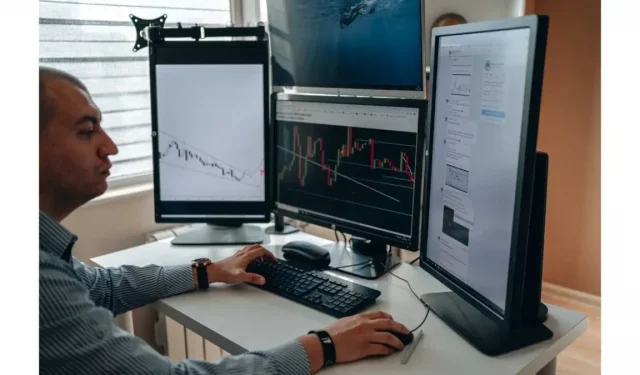
In recent years, the dual monitor configuration has become ubiquitous. Multitasking on the same screen is just not possible. But why stop at two? Multiple monitors are cool and what you need in life.
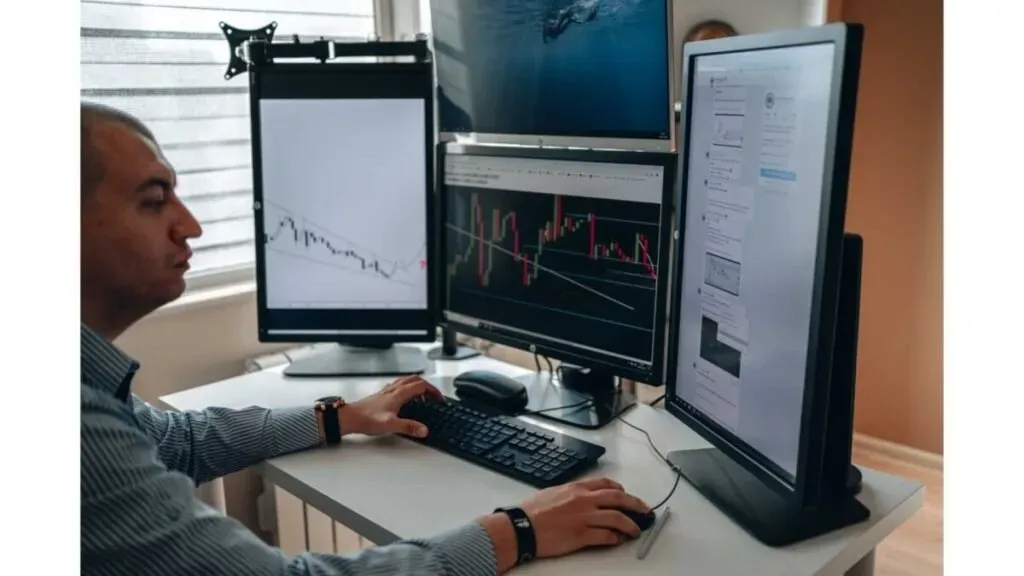
When scrolling through large texts, using one of your monitors vertically can have a huge impact. If you’re a gamer, you’ll understand how useful three or more displays can be in games that allow you to set up multiple monitors. You can even use your TV as a second display for your PC!
However, before you start, consider setting up multiple monitors. This tutorial will help you set up three monitors.
What is a three monitor setup?
By definition, a triple monitor setup is when three monitors are connected to a computer or laptop to display a single image. HDMI, VGA, Display Port, or Thunderbolt 3 cables connect three displays.
Monitors can display a wide range of interesting things. A multi-monitor device can be used for gaming or professional or business activities such as trading, programming, or creating and editing graphics.
This configuration is one of the most effective ways to increase productivity and make your computer experience more enjoyable. They say it’s a really convenient and enjoyable way to use a computer.
Before setting up multiple monitors
Before setting up multiple monitors on your device, make sure that all appropriate connections are connected to the displays and the computer. This involves using VGA, DVI, HDMI, or DisplayPort cables (preferred) for power and video connections.
If you’re unsure, check the make and model of your monitor (usually listed on the label on the back) and search the manufacturer’s manual online for more information on connecting a display.
How to rearrange multiple displays in Windows?
While you can connect a monitor to any available video port on your graphics card, it’s easy to connect them in the wrong order when setting up a system with two or three monitors. They will still work, but you may have trouble using your mouse or running programs until you reorganize them properly.
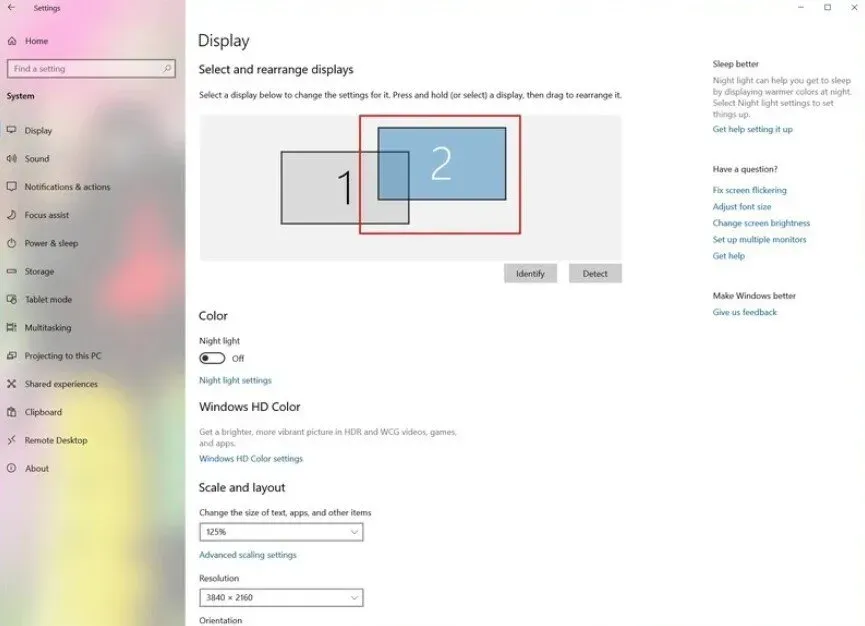
Follow these procedures to reorder displays in Windows:
- Open Settings->System->Display.
- Drag each display to the Select and Rearrange Displays section to reorder them according to their actual location on the desktop.
- Click the Apply button.
After following the instructions, Windows will remember the physical location, allowing you to work across multiple displays and run programs without any problems.
If you are not sure which monitor to select, use the “Define”button. If one of the monitors is not showing, make sure it is turned on and properly connected before clicking the Discover button. If you’re still having issues, try resetting their connections (or restarting your computer) and clicking the Detect button again.
How to adjust display scale and layout in Windows?
Windows does a fantastic job of recognizing and configuring the best settings when you connect one or more monitors to your computer. However, depending on your needs, you may need to change the Scale, Resolution, and Orientation of each monitor.
When setting up multiple monitors with different screen sizes and resolutions, so that text, programs, and other objects appear the same size on the displays, Windows provides scaling options.
For example, adjusting the zoom settings on a 4K display can help increase the size of objects and make them more readable.
Use the following procedures to get the correct scale setting for your needs:
- Open the settings menu.
- Select System.
- Select the Display option.
- Select the monitor you want to change in the “Select and rearrange displays”section.
- Choose the appropriate scale option from the drop-down menu and change the size of text, apps, and more.
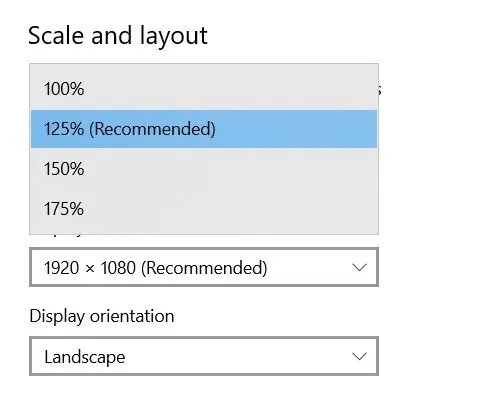
You may need to repeat steps 4 and 5 to change the scaling settings on additional displays and then select the Exit option to save the changes.
While you can change the scaling settings for each monitor, it is recommended that you use monitors of the same make and model with the same settings where possible. Otherwise, you may have difficulties and Windows may have trouble scaling.
Custom scaling
Complete the following procedures to specify a custom scaling value:
- Open the settings menu.
- Select System.
- Select the Display option.
- Select the monitor you want to change in the “Select and rearrange displays”section.
- Select “More scaling options”under “Scale and Layout”.
- Set the scaling size from 100 to 500 percent in the Custom Scaling section.
- Then click the Apply button.
Log out of your account and log back in to check your changed settings after completing the steps. If the new scaling configuration seems wrong to you, repeat the process with a different number until you find one that suits you.
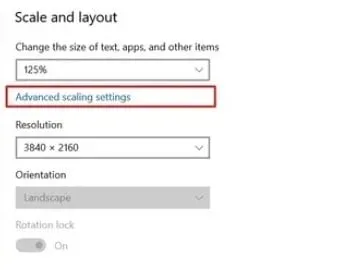
You must disable custom scaling and log out before switching back to the default scaling settings. If you don’t, the selection will be grayed out.
Choosing the Right Resolution
Normally, Windows automatically sets the suggested pixel resolution when you connect a monitor, but you can set it up manually by doing the following:
- Open the settings menu.
- Select System.
- Select the Display option.
- Select the monitor you want to change in the “Select and rearrange displays”section.
- Use the “Resolution”drop-down menu in the “Scale and Layout”section to select an appropriate pixel resolution.
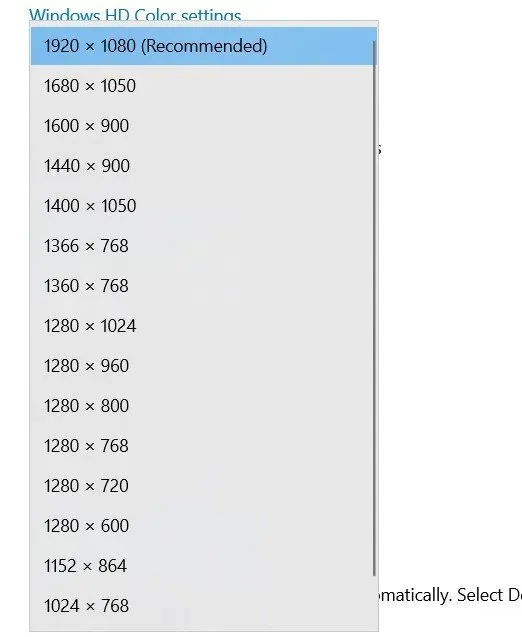
Repeat steps 4 and 5 to adjust the resolution on the remaining displays after completing the procedures.
If you want to increase the size of text and other elements on the screen, change the scaling settings, not the screen resolution.
Choosing the Right Orientation
You can also rotate the screen horizontally or vertically in Windows, which is useful if you have monitors with swivel stands that you want to use at a different angle for reading or coding.
Follow the steps below to adjust the orientation of each monitor.
- Open the settings menu.
- Select System.
- Select the Display option.
- Select the monitor you want to change in the “Select and rearrange displays”section.
- Select a mode from the Orientation drop-down menu under Scale and Position: – Landscape – Portrait – Landscape (Reversed) – Portrait (Reversed)
When you have completed all the steps, the display will change to the orientation you selected.
How to set up three monitors on one computer?
The triple monitor arrangement is a great way to multitask and also gives you a whole new look at your PC. Here’s a step-by-step guide to setting up multiple monitors horizontally or vertically at home or at work.
- Check if your computer supports triple monitors.
- Buy additional equipment if it is not
- Check if you have the required cables
- Set display options
- Update drivers for your monitors
Let’s go through each step just one at a time:
Step 1: Check if your computer supports triple monitors.
Triple monitors are not supported by all computers, especially older or cheaper ones. Units Look at the video ports on your computer to see if it has them.
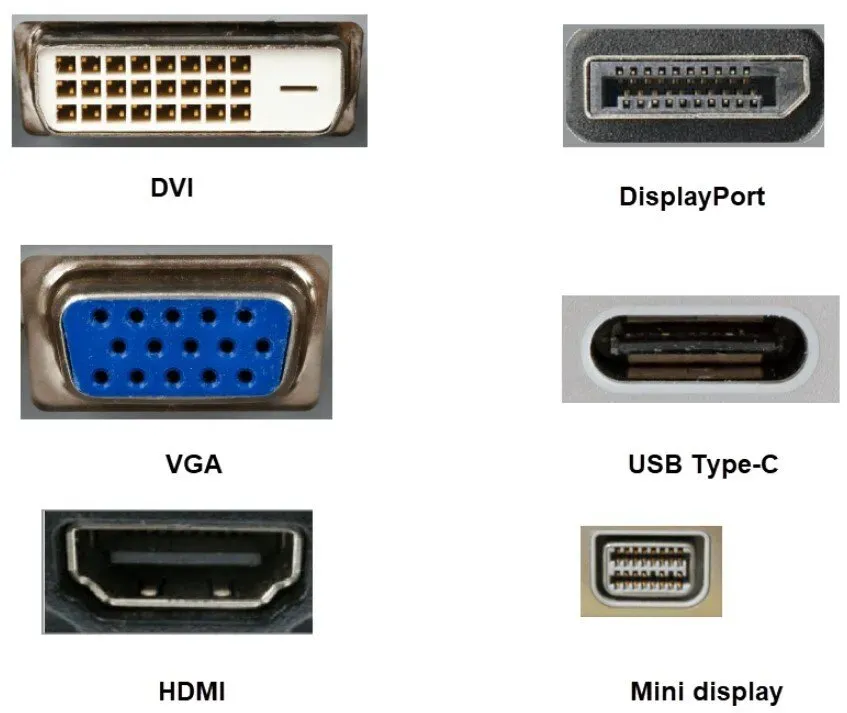
You will need at least three video ports that can be used simultaneously to drive three monitors.
To check your video ports, go to:
Check how many monitors your desktop supports
Your computer’s video ports will be on the back. Count the number of each category and note how many you have.
The next step is to check if all the ports you see can be used at the same time. There are two points to consider here:
1. Using integrated graphics AND video cards at the same time is generally not good.
Many computers have a video connector on the motherboard (known as “integrated graphics”) and a video port on the video card. You will see two groups of video connectors if your computer is configured this way. But don’t let the abundance of ports fool you.
While you can use the integrated graphics and graphics card to power multiple displays at the same time, you definitely don’t want to do that. Things will get pretty sluggish, especially if you’re switching between displays.
Instead of integrated graphics, use it if you have a separate graphics card. (Alternatively, you can use only the integrated graphics, although this is not recommended as the video card will perform better in resolution, quality, and response time.)
If you don’t mind latency and want to use both the integrated graphics and your graphics card at the same time, you need to go into your PC’s BIOS and enable the integrated graphics permanently.
(To do this, go to Configuration > Video > Onboard Graphics > Always Allow.) Menu options may vary slightly.) Any displays associated with integrated graphics (motherboard) will stop working as soon as you connect the monitor to the graphics card. if you don’t.
2. You cannot use all ports at the same time on some graphics cards (and some motherboards).
Some graphics cards have so many ports that you can’t use them all at the same time. For example, you may have three ports, but you can only use two at a time.
You will need to check the documentation for your graphics card to see how many ports you can use at the same time. You can also use Google and enter the make and model of your graphics card, as well as the number of displays you want to use. (For example, “three Nvidia GTX 570 monitors”).
The same can be said about motherboards. If you don’t have a dedicated graphics card and your motherboard has three ports, you will only be able to use two of them at a time. As a result, you will need to consult your motherboard documentation to find out what it supports.
Check how many monitors your laptop supports
If you’re using a laptop, chances are you have one video port on the left or right side of your computer: you might have two, but three is pretty unusual. As a result, you will not be able to use triple monitors unless you purchase additional hardware as described below.
Don’t give up if your computer doesn’t have the necessary ports to run three monitors. You might still be able to break out. To find out how to proceed to step 2 below…
You can skip to step 3 if your computer has the appropriate ports for running three monitors.
Step 2: Purchase additional hardware if your computer does not already support triple monitors.
Even if your computer doesn’t have enough video ports, you can still use three monitors! To do this, you need to purchase one of the following items:
Go ahead and read about the gadget you want to learn more about.
- A new video card is required.
- Multi-screen adapter that can be used outside
- USB to HDMI converter required.
- Using the dock
You can’t just connect three monitors to a standard video splitter as it will simply mirror your laptop’s image across all three displays.
New graphics card (desktop only)
If you have a desktop computer, you can upgrade to a graphics card that supports three monitors. This is not possible on a laptop since most laptops have an integrated graphics card permanently connected to the motherboard.
For example, the Gigabyte Geforce GTX 1050 Ti costs around $150.
However, before you go out and buy a new graphics card, keep in mind that not all graphics cards are compatible with your computer motherboard. Check the PCI Express slot on your motherboard, the size of the selected graphics card, and the power requirements to make sure the graphics card is compatible with your PC.
Check the PCI Express slot on the motherboard.
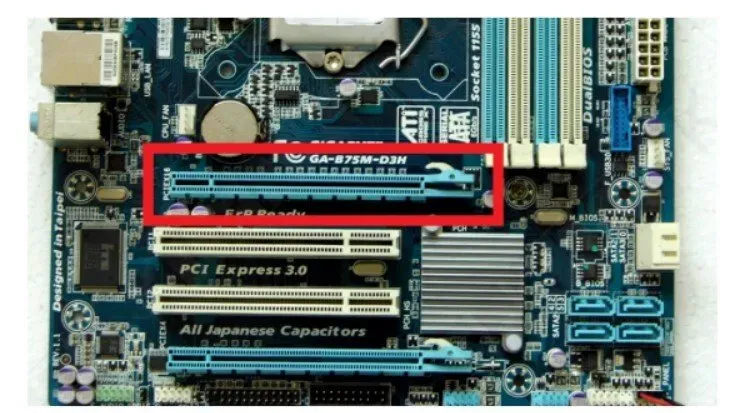
There are many kinds of expansion slots on the motherboard. A PCI Express x16 slot is required to connect a video card. The easiest way to find out if you have this slot is to google the make and model of your motherboard.
You can also check if you have a slot by opening the computer case. The PCI Express x16 slot on the motherboard should be the longest.
Check the size of the selected graphics card.
You need to make sure your computer case has enough space for the new graphics card, which is often very large due to the cooling fan.
If you are not sure about the size of your graphics card, please contact the manufacturer or retailer.
Check how much space you have for a card by knowing how big it is. In other words, find a PCI Express x16 slot and put something similar in it.
Check the power requirements.
A graphics card that supports three monitors will consume significantly more power than a card that supports one. For example, a typical video card requires 100 to 300 watts. However, a card that supports triple monitors may require 600W.
When you install a new graphics card, if your computer can’t handle it, it may suddenly turn off or not turn on.
Check your computer specifications to determine how many watts the power supply unit (PSU) can provide. If you can’t find any specifications, your computer’s power supply output should be visible.
Multi-screen adapter that can be used outside
With an external multi-display adapter, you can drive three separate displays even if your PC only supports one monitor output.
A new graphics card should be more expensive than an external multi-screen adapter, which costs around $150.
They’re also much easier to set up: connect one of the included cables to a USB port (which powers the adapter) and the other to a Mini DisplayPort or USB Type-C connector (this sends the video signal from your computer to the adapter).
USB to HDMI converter required.
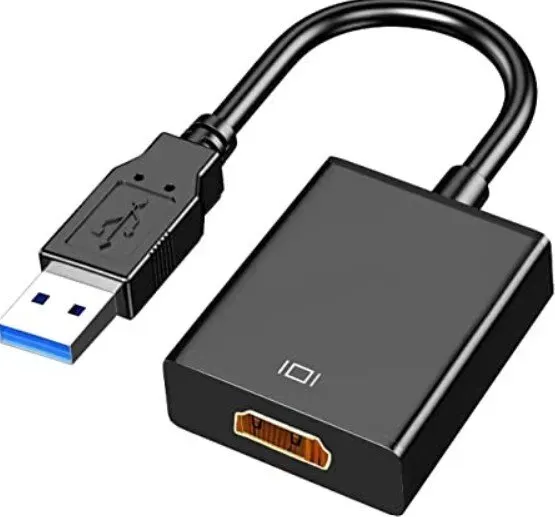
You can buy USB to HDMI adapters if you don’t have the money for an external multi-screen converter. Each additional monitor requires one adapter, so if you already have one monitor but plug two of these adapters into your PC’s USB ports, plug in a couple more monitors at the other end, and voila! You have an extended desktop with three monitors!
These adapters are great if you need three monitors for a low price (around $50), but they don’t work as well as a powerful graphics card or an external multi-display converter. As a result, they’re not ideal for gaming or watching HD videos.
Using the dock
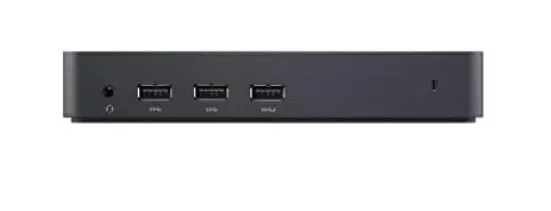
You can connect up to three different displays to your computer through the docking station. Use a USB host cable to connect your computer to the docking station and connect additional displays to the DisplayPort and HDMI connectors on the docking station.
One of these docking stations will set you back around $150.
The lack of cooling fans in such a docking station is a drawback. Some users say that it heats up quickly, so it may not be suitable for extended use or outdoor use.
Step 3: Check if you have the required cables.
Once you’ve established that your computer has the necessary video ports to run three monitors (or that you’ve purchased additional hardware), double check that you have all the necessary connections to connect everything.
Think back to the video ports you found in step 1 on your PC. For example, to connect three monitors, if your computer has two HDMI ports and one DisplayPort port, you will need two HDMI cables and one DisplayPort cable.
The next step is to check the ports on your displays. For example, if you are connecting to a computer with two HDMI ports and one DisplayPort, you must have two HDMI displays and one DisplayPort monitor.
If you do not have the necessary cables
You can purchase the necessary cords if you don’t already have them. Most cables will cost less than $10.
If the ports on your monitors do not match the ports on your computer
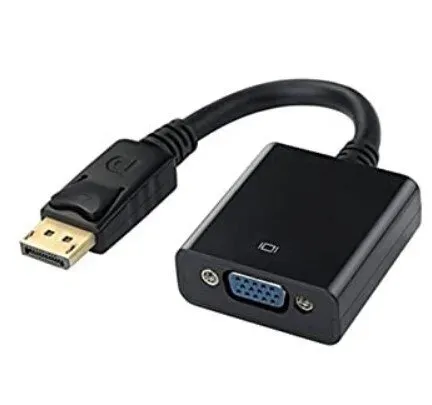
Don’t worry if the ports on your displays don’t match the ports on your computer. Purchase an adapter or adapter cord.
For example, if your computer has a DisplayPort port, but your display only has a VGA connection, you can purchase a DisplayPort-to-VGA adapter and then connect a VGA male-to-male cable from the adapter’s VGA input to the adapter’s VGA input. your monitor.
Step 4: Set display options
Once you have all the hardware you need (as described in steps 1, 2, and 3), it’s time to set up your displays and everything is properly connected. Here’s how to do it:
In Windows 7 or 8, change your display settings.
1. Select Screen Resolution from the context menu of the desktop.
You should now see a set of monitors, each with a different number.
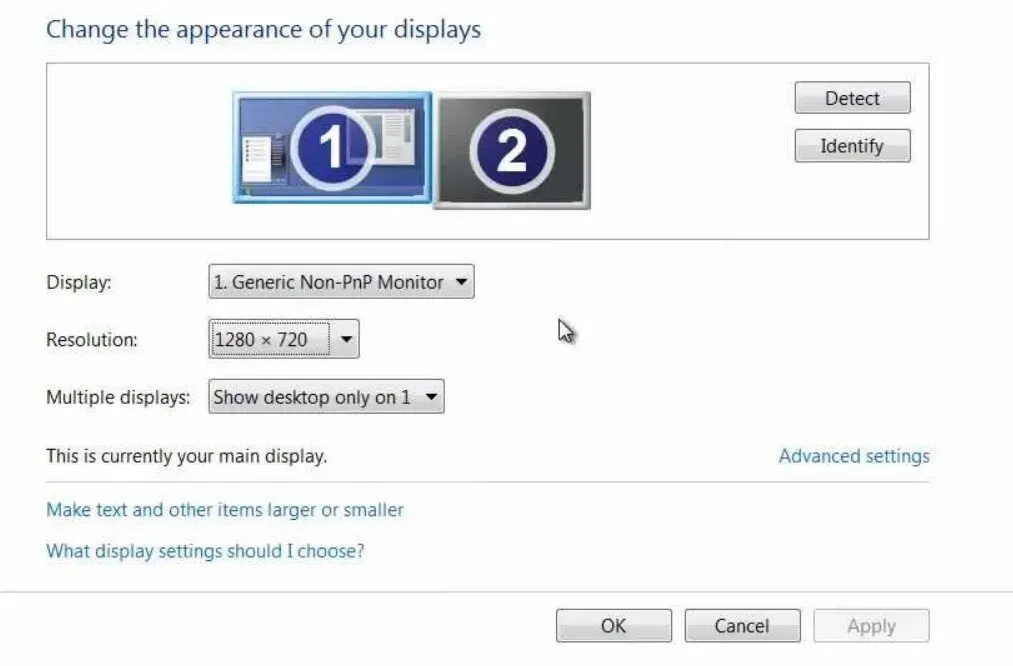
2. Select one, then select Detect to see which monitor in the image matches which monitor on your desk. For example, when you click on the monitor with the number 1, the number 1 will be displayed on one of your desktop monitors.
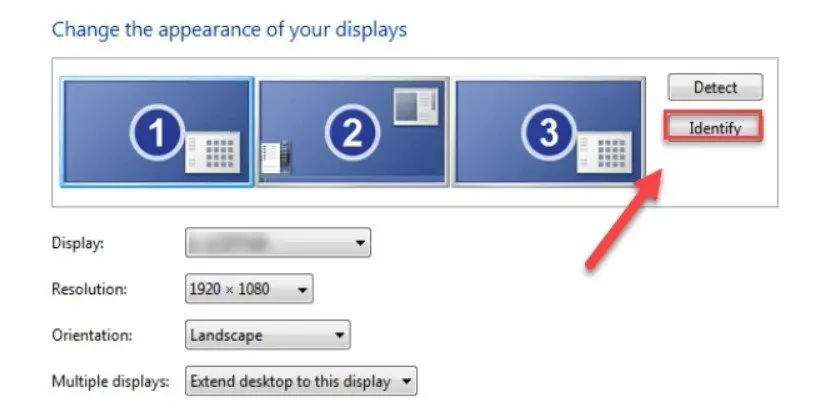
3. If one or more of your monitors are missing, click “Detect”and wait for your computer to recognize them.
4. Drag your mouse to adjust the screen layout if it doesn’t match how your monitors are placed on your desk.
5. Select Extend these displays from the drop-down list next to Multiple displays. You will then see a single continuous display that spans all of your displays (i.e. you can drag your mouse or windows from one screen to another).
6. Click Apply to save all changes.
Hopefully your displays will work properly once you complete this step. However, if any problems occur, updating your drivers may help.
In Windows 10, you can customize the display settings.
1. Select Display Options from the context menu on the desktop.
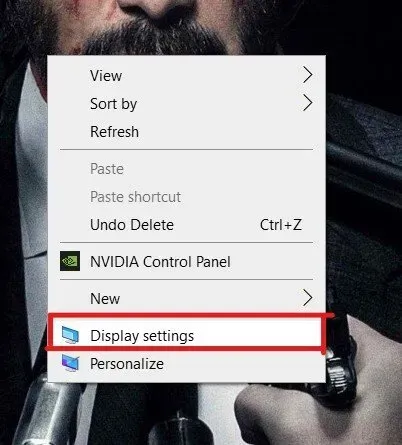
You should now see a set of monitors, each with a different number.
2. Select one, then select Detect to see which monitor in the image matches which monitor on your desk. For example, when you click on the monitor with the number 1, the number 1 will be displayed on one of your desktop monitors.
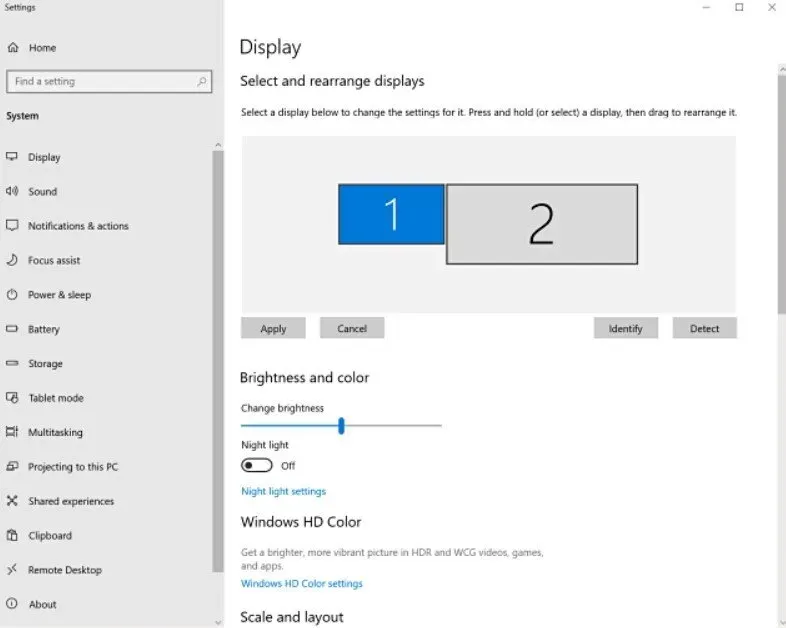
3. If one or more of your displays are missing, click Detect and wait for your computer to recognize them.
4. Drag your mouse to adjust the screen layout if it doesn’t match how your monitors are placed on your desk.
5. You can adjust the size of text, apps, and other items on your displays by adjusting Scale and Layout. You can also change the resolution and angle of the image.
6. Select Extend these displays from the drop-down list next to Multiple displays. You will then see a single continuous display that spans all of your displays (i.e. you can drag your mouse or windows from one screen to another).
Hopefully your displays will work properly once you complete this step.
Step 5: Update your graphics and monitor drivers
You should update your graphics card and display drivers to ensure that the triple monitor configuration works properly and to avoid problems such as signal loss and black screen. You can achieve this:
Manually download and install drivers
You can manually download and install the latest drivers for your graphics card and displays by going to all manufacturers’ websites, finding the correct drivers for your device models and Windows version, and then manually downloading and installing each one.
How to display the taskbar on multiple displays in Windows?
The taskbar will only show up on the primary display on a multi-monitor system by default, but you can change the settings to show it on all screens by doing the following:
- Open the settings menu.
- Select Personalization from the drop-down menu.
- Select Taskbar from the menu.
- Turn on the “Show the taskbar on all monitors”toggle switch in the “Multiple Displays”section.
Use the “Show taskbar”button in the drop-down list to select one of the various options for where the buttons for launching programs should be displayed on the taskbar:
- The entire taskbar.
- The main taskbar and the taskbar on which the window is open.
- The taskbar where the window is open.
Conclusion
There’s no reason why you can’t use three displays on one computer. While setting up a multi-monitor setup on your computer isn’t as simple as plugging in a new monitor and completing it, it’s doable and has a significant impact on how you use your computer.
FAQ
How to connect three monitors to a laptop?
To get started, double check if your laptop’s graphics card supports three displays. Then use the docking station to connect your laptop and displays and go to Settings > System > Display. Scroll down to “Multiple Displays”and select “Detect”if you don’t see all displays.
Do I need to use two identical monitors?
You do not need. Since they can all be connected to your computer, almost any screen can be used in a multi-monitor configuration.
Do you need taskbars on both monitors?
You can choose whether each of your displays will have a taskbar. To change the position of the taskbar on one or both screens, go to the taskbar settings and scroll down to the multi-monitor area.
Will running two monitors affect my computer’s performance?
When using a dual processor, any performance impact should be small. In most cases, you will notice this if you have an inexpensive installation and use demanding software. Switching from a full-screen application to another program running on the computer will result in performance spikes. Even with three monitors, there shouldn’t be any particular problems. However, after doing this, you may need to consider reducing the resolution of additional displays.
Leave a Reply